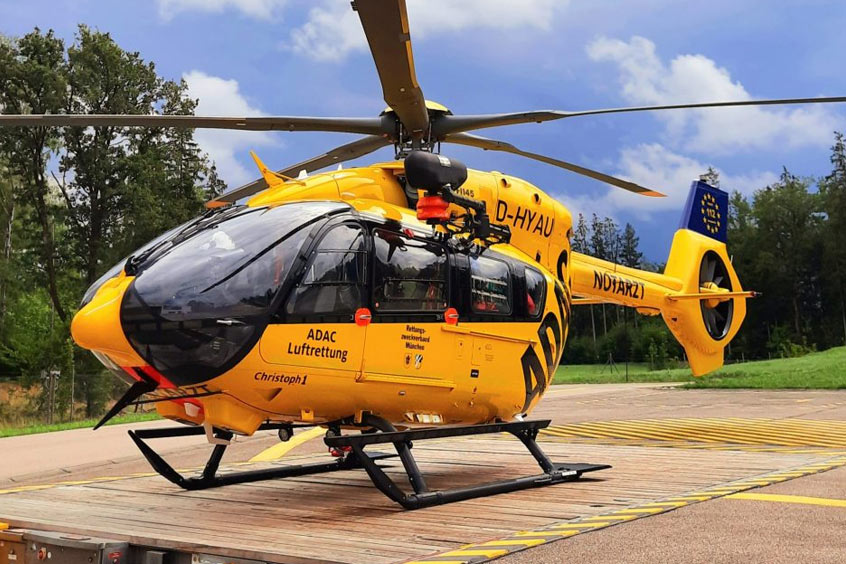Why visit ACE ’25?



ADAC Luftrettung is continuing to modernise its fleet; the newest and most modern Airbus H145 rescue helicopter with a five-blade rotor and winch is now in use at the air rescue station at Munich's Harlaching Clinic.
This helicopter offers more power and can fly with up to 100 kilogrammes more payload than its predecessor. Because more kerosene can be carried, the helicopter's maximum flight time has also increased by around half an hour.
“This is a huge improvement and range increase, which is particularly advantageous for the urgent transport of seriously ill patients between hospitals,” says station manager Roland Benning. “The fifth rotor blade makes the H145 even quieter in the air, which means less vibration in the interior and therefore a gentler transport for the patient.”
With two engines of around 900hp each, the helicopter is powerful, allowing the flying Yellow Angels to reach accident victims and hospitals as quickly as possible at a top speed of up to 260kph. The maximum take off weight is 3.8 tons. The weight of the new H145 is lower than that of the previous model, meaning it has more payload capacity, which can be used for additional special equipment or medical personnel to care for intensive care patients.
Last year, ADAC's Munich crew was called out to 1,621 missions around the state capital, including 97 with rescue winches. The new H145 is also destined for highly demanding special missions in the mountains or hard-to-reach locations due to its high performance. Munich is the fourth ADAC station where the five-blade technology is being used.
ADAC Luftrettung offers different types of helicopters depending on requirements. For primary missions such as emergency missions, the company still mainly relies on the H135 helicopter. Compared to the H145 it is smaller and more manoeuvrable, with correspondingly less downwash, and therefore has advantages in urban, densely built-up areas. It is also cheaper to purchase and operate.
Meanwhile, DRF Luftrettung's station in Berlin has received its first technical upgrade since beginning operations in the German capital in January this year. Its five-bladed Airbus H145, the Christoph 100, has been flying over Berlin.
The helicopter offers many advantages compared to its predecessor, but the call sign Christoph 100 and the red and white livery remains unchanged. The model change does bring some improvements for patients and crew; the helicopter is even smoother in the air thanks to the fifth rotor blade, and the emergency crew also benefits from a higher payload so they can fill up with more fuel and cover longer distances during missions.
“It is important to us to offer our patients the best possible care,” says Tim Saueressig, station manager and pilot at DRF's station in Berlin-Buch. “We are therefore very pleased that an H145 with a five-blade rotor is now available to us as part of the fleet modernisation.”
The first five-bladed H145 was converted for the station service at DRF Luftrettung's maintenance facility in December 2020. Since then the company has added more units, with Berlin-Buch the 19th station to take delivery. This makes the DRF Luftrettung fleet one of the most modern in air rescue in Europe.